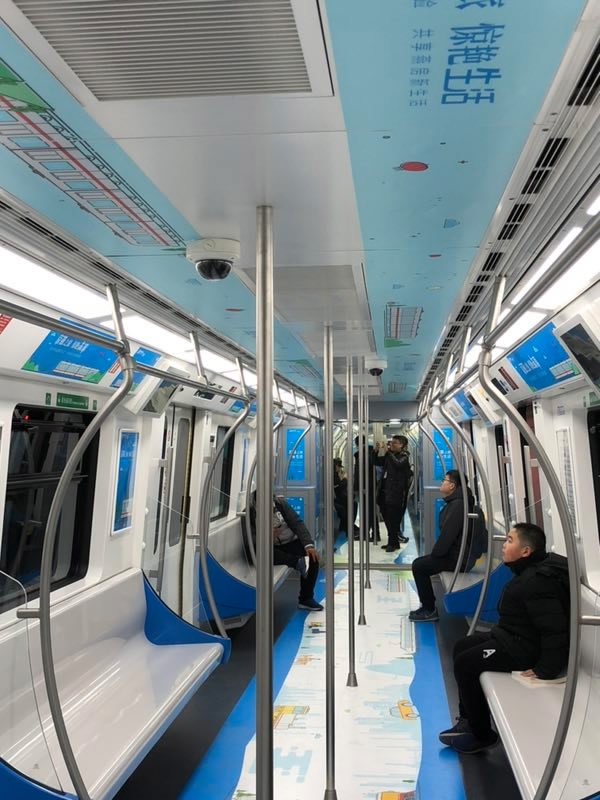
Transit
14:39, 31-Dec-2017
A deeper look at China's first domestically developed automated subway
By Wei Lynn Tang

Today, words like "unmanned", "automated" and "driverless" seem to be conquering the world of technology.
China already has unmanned convenience stores and supermarkets. Driverless cars were also given the green-light to operate on certain test roads recently.
On Saturday, the country launched its first-ever fully-automated subway line.
And that's not all. It is also China's first-ever completely domestically-produced line. That includes everything from rolling stocks to signal communication systems, CCTV and rail tracks.
The Yanfang line takes you from Beijing's southwestern suburban areas of Yanshan to Fangshan, from where you can then transfer to trains on Line 9, which are bound for Beijing city center.
According to the subway operator, a whole trip runs through 9 stations, spanning across 14.4 kilometers, costs just 5 yuan.
Convenience to southwestern suburbs
Fu Jingtao, Yanfang line manager with Beijing MTR Operation Admin Corp., said this line will help bring convenience to people living in Yanshan.
"Previously people had to rely on buses or taxis to get to Fangshan district. But now with this subway line, residents can have a more seamless journey without being too affected by weather or traffic conditions," Fu said.

Seats are heated in the Yanfang upper-ground subway line. /CGTN Photo
Seats are heated in the Yanfang upper-ground subway line. /CGTN Photo
Security measures
To be sure, there will still be an attendant on board to monitor track conditions and attend to emergencies.
Although, his or her role will merely be to supervise, and not to operate.
The subway operator said the Yanfang line was designed by the Grades of Automation level 3 (GoA 3) standard.
According to the International Association of Public Transport, GoA 3 is the fourth level of its five-level standard – there's a GoA 0 meaning no automation at all – meaning this is just one step away from fully automation.
"When passengers become more accustomed to this, we will upgrade it to GoA 4, which is said to be the highest level of urban rail transit operation systems," said Mao Xinde, who is the automation operation system project director for Beijing Traffic Control Technology.
What's different about this?
Automated subway trains are not a new concept.
Paris reportedly started using a driverless subway in 1998, and Copenhagen in 2002.
The core difference for the Yanfang line, according to Mao, lies within its signal system.
"Compared to what is imported, ours is based on operational habits in China. We have integrated data in the vehicle-ground transmit network, to make this automatic operation system more in accordance to our rail transit industry's operational needs," he said.
Mao added that the Yanfang line is equipped with 4G-based train control.

The Yanfang line equipped with LTE network /CGTN Photo
The Yanfang line equipped with LTE network /CGTN Photo
Trip to the suburbs
Interestingly, this line has attracted not only those wishing to head to Beijing city center, but also urban passengers who wish to explore the suburbs.
"I wanted to see a petroleum factory in Yanshan because that's what Yanshan is known for. I also wanted to try this line out, because it is China's first domestic-made automated subway," said a female passenger.
Yanshan is a suburb built around a petroleum and chemical enterprise, with Sinopec Beijing Yanshan Company's petrochemical complex situated there.
The Yanfang line is one of the three new lines launched on Saturday. Altogether, with these lines, Beijing will have 22 lines, with a total length of 608 kilometers.
Beijing plans to extend the subway to 30 lines with a length of 900 kilometers by 2020.

SITEMAP
Copyright © 2018 CGTN. Beijing ICP prepared NO.16065310-3
Copyright © 2018 CGTN. Beijing ICP prepared NO.16065310-3